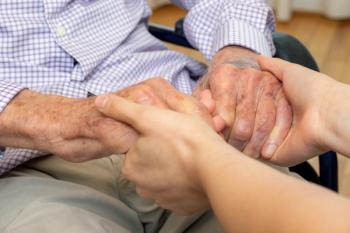
Understanding the scope of aggressive incidents in hospitals | Safer Hospitals
Researchers found healthcare workers are facing a verbal or physical incident at least once for every 40 hours worked. Joanne DeSanto Iennaco of Yale University talks about protecting staff.
Even with more attention being placed on violence in hospitals and health systems, healthcare leaders say many incidents don’t come to light.
Joanne DeSanto Iennaco, professor of nursing and psychiatry at Yale University School of Nursing and School of Medicine, says there’s a clear need for more insights into violent and aggressive encounters between patients and hospital staff.
She led a research team that examined violence in hospitals, and their
Researchers found that there were 1.17 violent incidents per 40 hours worked, so workers were exposed to at least violence once a week. Each unit saw two to three incidents of violence per day, she noted.
“This study actually quantifies the underreporting that goes on around aggressive events,” Iennaco tells Chief Healthcare Executive®.
Much attention has been focused on incidents involving healthcare workers that have resulted in physical injuries, but she says that fails to capture the hostility healthcare workers routinely encounter, she says.
Researchers examined five inpatient units in a community hospital and an academic medical center. They collected data from event counters and Aggressive Incident and Management Logs to get a better picture of violence in hospitals. Researchers examined data collected over a two-week period in 2017.
Some workers recorded as many as 10 aggressive incidents per shift.
“That’s pretty disturbing,” Iennaco says.
Impact of threats
Researchers tracked violent incidents in the study, but they also counted incidents where patients threatened staff. The study found 2 verbal aggression events for every 20 patient days, compared to 0.85 physical aggression rates per 20 patient days.
Iennaco says it’s important to recognize those incidents of verbal aggression and the toll it takes on clinicians.
“This is a group of workers whose heart and soul are about going to take care of people,” Iennaco says. “They care about people. They want to do a good job. And so when you get verbally abused by a person that you're taking care of, it's very upsetting.”
She says including verbal aggression and physical incidents, even those that don’t result in physical injuries, provides a more accurate picture. Health systems must go beyond focusing on cases where clinicians have been hurt, she says.
“If we're using that as a measure of a problem with violence, well, we're never really going to get anywhere,” Iennaco says.
For some clinicians, verbal aggressions, especially threats, can be especially disturbing, sometimes even more than physical incidents.
“Some of the verbal abuse could be worse in terms of a staff member having to cope with that,” she said.
If a patient threatens to go after a nurse and the nurse’s family after being discharged, as Iennaco says, “That stays in the back of your head.”
A majority of the aggressive events (50.7%) uncovered in the study occurred during the day, researchers found. Conversely, 24.3% of aggressive events occurred in the evening, and 25% happened during the overnight shift.
Iennaco says the higher level of interactions between patients and clinicians during the day may explain why more incidents occur during the day shift.
“A lot of work and activity happens in the daytime in these units,” Iennaco says. “And so people see their doctor, they may or may not be happy with what happened with the doctor. They may have had their medicine change. There's all kinds of testing going on.”
She also says some aggressive incidents can occur when there are transitions in care, which Iennaco says can be “a very problematic time.” Some patients can get more agitated if there’s been a shift change, or if they need to move to another part of the hospital for treatment.
Encouraging sign
Researchers found one reason for optimism in the study. Many nurses who had an aggressive episode with a patient were able to calm them down without having to call for additional staff or security.
Three out of four aggressive events (75.2%) were managed with verbal de-escalation, the study found.
“As nurses get more experience, they learn how to better manage when things get a little bit dicey with a patient,” Iennaco says. “They learn how to manage the conflict, and work with the person. And so I do think this is an important strategy.”
Healthcare workers should be trained in de-escalation strategies, and in recognizing patients who may be showing signs of becoming more aggressive or violent, she says.
“Learning how to help people in those moments is really important education that workers need,” Iennaco says. “But workers also need education about how to identify people who are at risk for violence.”
Not all healthcare workers are getting that kind of training, she says.
Moving forward
Hospitals need to gain more information about the aggressive incidents they’re staff are encountering, Iennaco says.
“I'm actually hoping that hospital leadership and nurses and staff members begin to understand why this is important,” she says. “Because really, underreporting is so common. And we really need to begin to think, on a bigger level, how do we collect this information?”
Hospitals should be collecting and analyzing data on aggressive patients just as they examine information about infections or patient falls, Iennaco says.
Health systems also can’t employ a one-size-fits-all approach, because some units have more incidents with violent patients than others, she adds. Some units may need different interventions.
Hospitals should offer more support to workers in keeping them safe and coping with the difficulty of dealing with hostile patients.
“That really requires our leaders to step in,” Iennaco says. “Take a look at the situation and figure out with the team, what are the best ways we can support in this environment?”








































